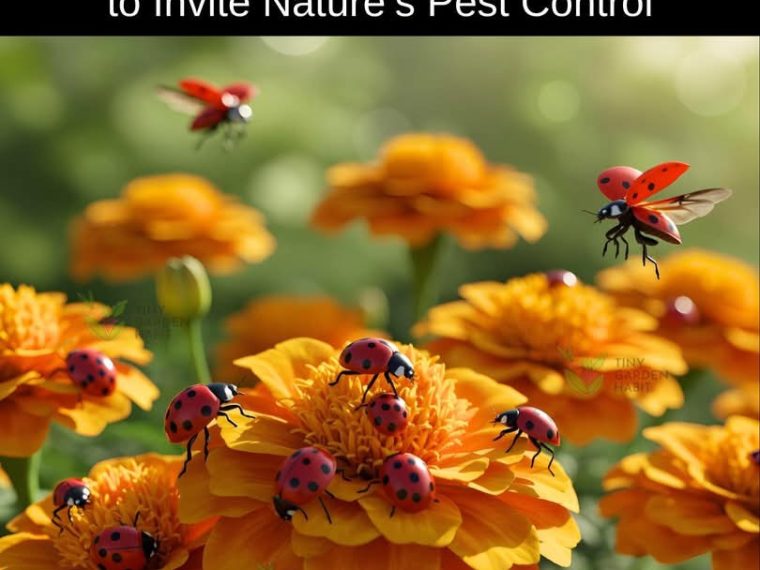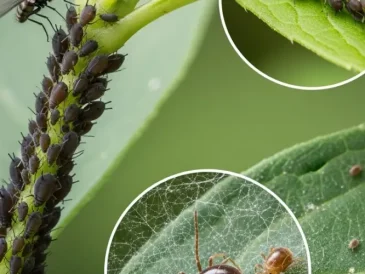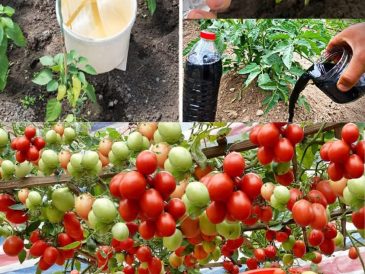Creating a garden that supports its own health is often a matter of encouraging the right relationships. Among the most helpful partnerships is that between flowering plants and beneficial insects.
Ladybugs are among the most reliable natural controls for aphids, which can damage a wide range of plants. By planting species that offer food and habitat, it’s possible to attract ladybugs into your garden.
In doing so, you also support a more biodiverse and biologically active growing space, where pest populations are managed naturally.
Why You Want Ladybugs in Your Garden

Ladybugs, particularly in the larval stage, are efficient predators of aphids and other soft-bodied pests that commonly affect garden plants—a single larva can consume dozens of aphids per day.
Unlike chemical insecticides, which can disrupt ecological balance, ladybugs contribute to pest suppression without interfering with pollinators or soil organisms, offering a form of pest control that reflects the balance of a natural ecosystem.
By supporting these natural predators, pest pressure can be reduced over time without relying on synthetic controls.
How Flowers Help Attract Ladybugs

While ladybugs are known for feeding on aphids and other soft-bodied pests, they also depend on nectar and pollen for sustenance, mainly during their adult phase. Many flowering plants provide this, especially those with flat-topped or umbel-shaped flower heads flowers which are easy to access.
Different flowers can also provide shelter or places for ladybugs to overwinter, particularly varieties with dense or finely divided foliage. These types of plants often serve as habitat hubs, attracting not just ladybugs but also hoverflies, lacewings, and parasitic wasps.
8 Flowers That Bring in Ladybugs Naturally

1. Dill (Anethum graveolens)

Often grown for its aromatic foliage, dill can also become useful once allowed to flower. Its umbrella-shaped flower heads are highly attractive to ladybugs, as well as other beneficial insects like lacewings and hoverflies, both of which also help suppress aphid populations.
2. Calendula (Calendula officinalis)

Calendula, also known as pot marigold, has a long flowering period, producing lots of vibrant, golden-orange or yellow flowers through the summer and into fall that are rich in nectar. They can also serve as a sacrificial plant, drawing aphids away from crops that are more vulnerable, like brassicas or beans.
3. Yarrow (Achillea millefolium)

Yarrow develops dense clusters of tiny, nectar-rich flowers on sturdy stems. These provide easy access for ladybugs and other beneficial predators. It is perennial in many climates and, once established, requires little beyond seasonal cutting back.
Tip: Yarrow is a great addition to wildflower meadows and naturalized gardens.
4. Tansy (Tanacetum vulgare)

Tansy plants have finely divided, almost feathery leaves and yellow, button-like flower heads. The flowers are particularly attractive to predatory insects, including ladybugs.
Tip: It’s important to be selective about placement, tansy can become invasive if allowed to self-seed unchecked. In a wild or naturalized garden this can be okay, but in more formal plantings, consider growing tansy in containers.
Note: Tansy is toxic to animals like cattle, horses, goats and sheep, and some other pets if ingested. If you garden near livestock or have curious animals, it’s best to skip this one or plant it well out of reach.
5. Fennel (Foeniculum vulgare)

Fennel, like dill, is part of the Apiaceae family and produces similar umbrella-like flower heads, which are well-suited to pollinators and predatory insects. While fennel is often grown for its bulbs or fronds, it’s worth letting a few plants bolt so that they produce their beneficial flowers.
6. Cosmos

Cosmos are straightforward to grow from seed and perform well in lean soils. They are light on care requirements but generous in attracting insect activity. Ladybugs visit cosmos for nectar, and the plants’ fine, feathery foliage offers shelter as well. Taller varieties can also provide partial shade and wind protection for nearby, more delicate plants.
7. Sweet Alyssum (Lobularia maritima)

Sweet alyssum forms low, spreading mats dotted with clusters of tiny four-petalled flowers, which are rich in nectar. These plants can flower right up until the first frost in the fall, making them especially valuable to adult ladybugs when insect prey is scarce.
8. Marigolds (Tagetes spp.)

Marigold flowers, especially those of single-flowered varieties, produce nectar and pollen that support a range of beneficial insects, including ladybugs. Their compact growth habit makes them easy to integrate among vegetables or border plantings without crowding more delicate crops.
- Avoid pesticides: Insecticides, particularly broad-spectrum types, can cause harm to ladybugs and other beneficial insects and pollinators. Even organic-approved sprays can be harmful if applied aimlessly.
- Choose variety: Plant a mix of flowering species alongside vegetables or fruit crops, creating a range of heights and flowering times. Grouping nectar plants near pest-prone crops also improves the odds that ladybugs will stay close to where they’re most needed.
- Provide water source: Ladybugs need hydration, and standing water with safe perches can make a real difference to their survival. A simple dish filled with pebbles and topped up regularly is enough.
Final Thoughts

Encouraging ladybugs in the garden is a straightforward way to deal with aphids and similar pests, without turning to chemical controls.
But it’s not just a matter of attracting them once—they need the right conditions to stay. Plants that offer nectar, shelter, and a place to reproduce help create those conditions. Even a few well-chosen species can make a difference, especially when mixed into vegetable beds or borders.
Over time, this kind of planting creates a more self-regulating system that reflects a natural ecosystem, where pests are kept in check by balance.




